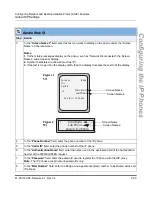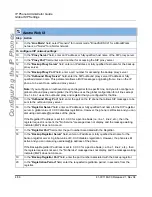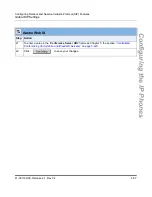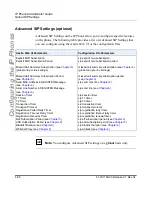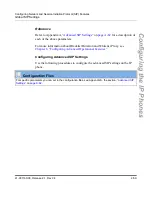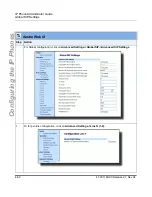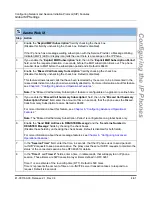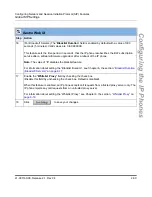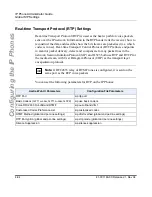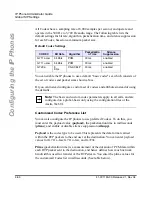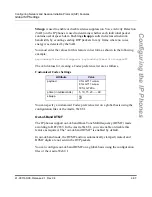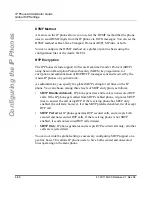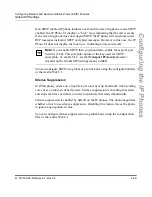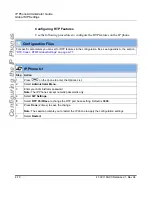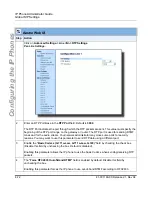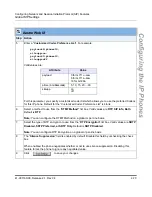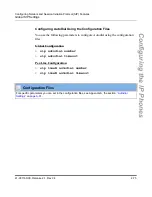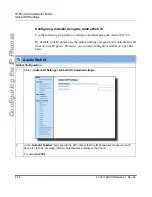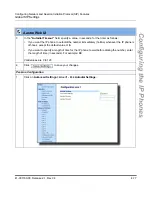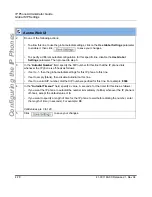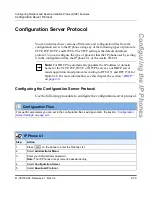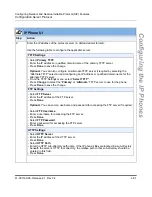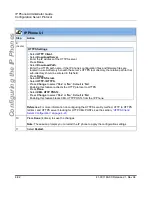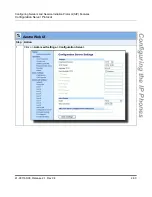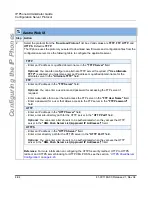
Global SIP Settings
41-001160-00, Release 2.1, Rev 04
4-69
Configuring Network and Session Initiation Protocol (SIP) Features
Configuring the IP Phones
If an SRTP enabled IP phone initiates a call, and the receiving phone is also SRTP
enabled, the IP Phone UI displays a “lock” icon, indicating that the call is secure.
If the receiving phone does not support SRTP, the IP phone will send unsecured
RTP messages instead of SRTP encrypted messages. However in this case, the IP
Phone UI does not display the lock icon - indicating a non-secure call.
You can configure SRTP on a global or per-line basis using the configuration files
or the Aastra Web UI.
Silence Suppression
In IP telephony, silence on a line (lack of voice) uses up bandwidth when sending
voice over a packet-switched system. Silence suppression is encoding that starts
and stops the times of silence in order to eliminate that wasted bandwidth.
Silence suppression is enabled by default on the IP phones. The phone negotiates
whether or not to use silence suppression. Disabling this feature forces the phone
to ignore any negotiated value.
You can configure silence suppression on a global-basis using the configuration
files or the Aastra Web UI.
Note:
If you enable SRTP, then you should also enable Transport Layer
Security (TLS). This prevents capture of the key used for SRTP
encryption. To enable TLC, set the
Transport Protocol
parameter
(located on the Global SIP Settings menu) to
TLS
.

